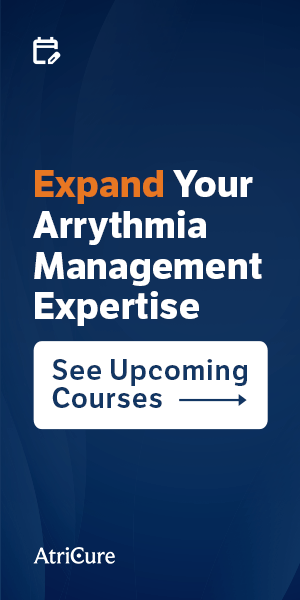The Afib Blind Spot That's Undermining Heart Surgery Outcomes – Especially in CABG

Why 1 in 5 cardiac surgery patients go undiagnosed
When preparing a patient for Coronary Artery Bypass Graft (CABG) or valve surgery, there's a crucial step that often gets overlooked: screening for atrial fibrillation (Afib). And, overlooking that step can have significant consequences.
A recent analysis involving more than 79,000 patients revealed a critical oversight: 20% of CABG patients had experienced Afib-related hospital admissions within the previous three years—but this diagnosis was unknown at the time of surgical referral.1
That means thousands of patients may be having surgery with undiagnosed Afib, missing opportunities to improve outcomes through early intervention.
The Cost of Missing Afib
Undiagnosed Afib can complicate cardiac surgery and recovery. When it's left unmanaged, Afib increases the risk of stroke,2 prolonged hospital stays3 and repeat procedures.4 Fortunately, it's often detectable before surgery—but only when intentionally looked for.
That's why screening for Afib must be a standard part of the preoperative process for patients undergoing CABG or valve surgery.5
The 5-Minute Screening That Could Change Everything
Start with a thorough chart review - key indicators of previous or suspected Afib include:6
- History of Holter monitoring
- Past cardioversion
- Prior catheter ablation
- Any documented episodes of irregular rhythm
Beyond the chart, collaborate closely with the referring physician.
- Review the patient's cardiovascular history for signs of Afib7
- Determine whether surgical ablation should be part of the operative plan8
And at the point of surgical referral, simple and quick intake questions can help flag potential undiagnosed Afib:9
- "Have you ever been told you had an irregular heart rhythm?"
- "Do you experience heart palpitations?"
- "Have you ever taken blood thinners?"
- "Have you used medications to control your heart rate?"
These low-effort, high-yield questions can provide essential clues that could trigger further evaluation.10
What Early Detection Unlocks: The Outcomes Payoff
Identifying Afib before cardiac surgery allows for:
- Proactive rhythm management11
- Integration of ablation into the surgical plan12
- Improved long-term outcomes13-14
It's not just about preventing complications—it's about giving patients the best possible chance for a smooth recovery and long-term risk reduction.15
By implementing consistent and systematic Afib screening into standard pre-surgical evaluation where possible, patient outcomes can be significantly improved while reducing preventable complications.16



